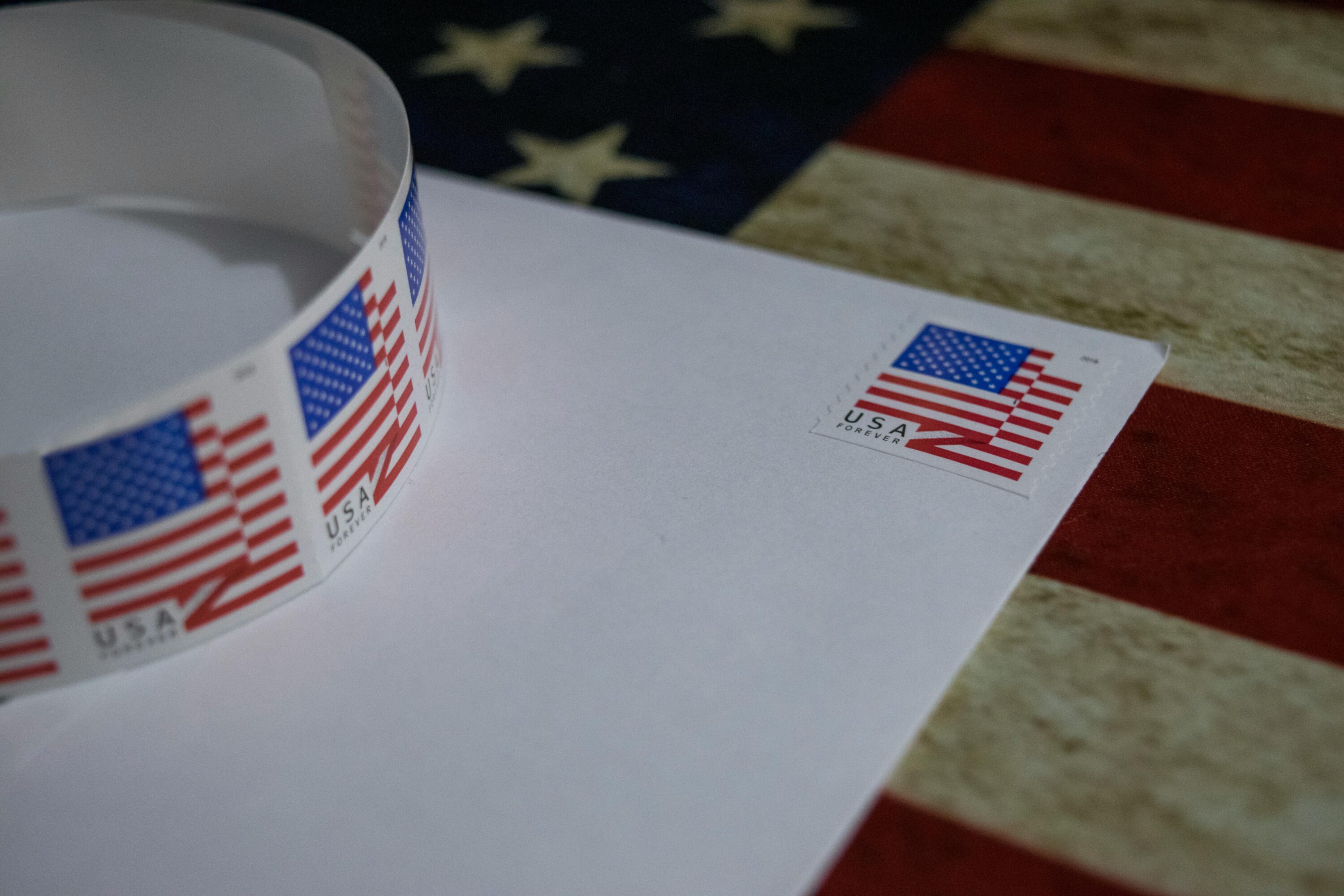A well-executed direct mail marketing campaign is a powerful tool to engage current and prospective customers, even in today’s digital age. In fact, direct mail has the highest return on investment (ROI) for individual media (161%) despite rising postal costs.
While numerous factors directly impact the outcome of a direct mail campaign, 11 steps are crucial for campaign success. In this how-to guide, you’ll find a comprehensive list of the tried-and-true steps to a successful direct mail marketing campaign.
1. Define the Objective of the Direct Mail Marketing Campaign
The first step is to set the objective for the direct mail marketing campaign and determine how success will be measured. Is the goal to acquire new customers, build brand awareness, or increase in-store or online traffic?
A clear campaign objective sets the tone of the campaign, defines clear expectations, and enables effective communication. Determine what metrics will be used to benchmark success. Common success metrics include response rate, conversion rate, ROI, and cost per acquisition. Paying attention to these metrics helps marketers track results and improve future performance.
2. Determine the Target Audience and Mailing List
One of the most critical decisions in the campaign planning process is determining the target audience. The goal is to choose a high-quality audience whose needs will likely match the products or services featured in the campaign. Accomplish data-driven audience selections with demographic targeting for consumers, firmographic targeting for businesses, or by selecting a hyper-focused niche audience.
Alternatively, lookalike modeling can be used to identify the ideal market, especially if you’re managing campaigns for multiple brands. Since lookalike audiences are generated from first-party data, they provide a scalable way to expand reach to new consumers with qualities similar to those of existing customers.
3. Know Your Next Steps
A direct mail campaign should not be “one and done.” Having a follow-up plan is essential. Multiple impressions are often needed for a consumer to take notice, so commit to a strategic sequence of additional mailings. Remember to maintain brand consistency to build familiarity, but do make small changes to their creative and copy.
Since direct mail is an investment, integrating email as a complementary touchpoint to an existing direct mail program is a cost-effective solution to reach the same audience—boosting campaign impact and ROI.
4. Develop the Offer
The offer, giveaway, or premium must generate excitement while reinforcing the overall campaign objective. Consider the relevance to the audience and perceived value. The offer should be clearly worded, easy to understand, and hard to resist. To create a sense of urgency for the recipient to respond, add an expiration or respond-by date to the offer.
5. Showcase Your Strengths
Each direct mail piece should highlight how the product or service will benefit the recipient, including common challenges that can be solved. Ensure the message is well-written, easy to understand, and free from spelling and grammatical errors.
The copy should be clear, concise, and easy for the recipient to read and understand; bullet points are an excellent way to achieve readability. Avoid overloading the message with features, functions, or technical language; instead, focus on clear, benefit-driven copy.
Ultimately, the goal is to have the reader imagine themselves using—and benefiting from—the product or service. Social proof, such as case studies or testimonials, can help; they are an excellent way to reinforce the value proposition and build credibility.
6. Establish a Clear Call To Action (CTA)
A CTA should tell the recipient exactly what they need to do—call, click, download, purchase, etc—and create a sense of urgency to respond. With a clear and measurable call to action, recipients know the steps to redeem the offer.
The CTA is an excellent place to reiterate the primary benefit and expiration date. Additionally, offering multiple response mechanisms will be convenient for the reader and will enable them to respond via the channel they are most comfortable with.
7. Stand Out from the Crowd
In direct mail, design is critical. For readers to take notice, direct mail creative needs to stand out from other pieces in the mailbox. This can include using a dimensional or padded mailer or a brightly colored envelope. Direct mail is tangible; therefore, emphasis on quality design, printing, and materials will go a long way toward enhancing brand perception.
Many brands—and their customers—value sustainability. Consider using eco-friendly, sustainable materials; Earth-conscious consumers will appreciate the thoughtful focus on sustainability.
8. Personalize the Content
Personalization can help make recipients feel special and evoke a positive emotion. Using data, customize mail pieces for specific recipients. A personal touch often leads to improved engagement and increased response rates over more generic, less personalized versions.
Personalization can be as simple as incorporating the recipient’s name. For a more advanced approach, employ variable printing techniques to customize images, offers, and text based on audience characteristics. Personalization creates the feeling of one-to-one communication and goes a long way toward creating brand awareness and positive perception.
9. Test, Measure, and Fine-Tune Campaigns
Testing is the best method for optimizing marketing efforts and increasing overall success rates. When it comes to direct mail, each component of the process can directly impact the results. Create a testing strategy to ensure you send the right creative with the right message to the right audience. Testing does not have to be complicated; some of the best testing programs change one component at a time to see how response rates are impacted.
Implement a system to accurately track responses. When a consumer responds, capture their contact details, how the recipient responded, and which channel the recipient responded to. Tracking responses and conversions will allow you to assign attribution and calculate the campaign’s ROI.
Track opt-out requests as well. Tracking opt-out requests helps you maintain compliance, improve audience targeting, and protect your sender reputation. These requests will become part of a master suppression file that can be utilized during future campaigns to ensure consumer preferences are being honored.
10. Provide Immediate Follow-Up
When a response is received, follow up as quickly as possible. Providing excellent customer service at the onset will build responders’ confidence. This is crucial because, for many responders, this will be the first contact they have had with your company. Beyond asking for the sale, the follow-up is also a means to open the consumer up to continued communication with your brand—whether through future mailings, email, or social media.
11. Create a Seamless Omnichannel Experience
Building long-term brand equity through direct mail marketing requires consistency across marketing channels, particularly when coordinating with digital efforts. Combining direct mail with other channels like email, programmatic, and social media is a comprehensive strategy that increases overall reach.
By engaging with consumers through multiple touchpoints, you create additional opportunities to interact with the intended audience. This ultimately reinforces brand awareness and provides audience members with the ability to consume content and respond using the channels they prefer.
Ask your data partner whether your direct mail list can also be activated for programmatic, social, or email channels—either through data onboarding, email append, or other data services. Deep Sync makes cross-channel data activation possible. For example, direct mail lists purchased for unlimited use can be activated across Meta, TikTok, Google, and The Trade Desk using Enhanced Onboarding. This makes it possible to reach the same, exact audience across multiple channels.
Recap: Steps to a Successful Direct Mail Campaign
Here are our top 11 steps to remember for your next campaign:
- Establish the Objective
- Determine the Target Audience
- Know Your Next Steps
- Develop the Offer
- Showcase Your Strengths
- Establish a Clear CTA
- Stand Out from the Crowd
- Personalize the Content
- Test, Measure, and Fine-Tune Campaigns
- Provide Immediate Follow-Up
- Create a Seamless Omnichannel Experience
As you strategize for your next direct mail marketing campaign, keep these steps in mind. Each one plays a key role in building a high-impact direct mail strategy—from defining your goals and selecting the right target customers to designing a compelling direct mail piece and tracking your response rate.
And remember: the best campaigns start with the best data. Whether you’re refining your mailing list, activating audiences across marketing channels, or looking to fine-tune performance based on past results, a data provider can help you maximize your campaign’s success.
Achieve Direct Mail Success with Deep Sync
Deep Sync offers data, targeting, and omnichannel solutions tailored to your goals—whether you’re running campaigns in-house or supporting clients. Not every brand will have the right data to launch an effective direct mail campaign. That’s where Deep Sync can help: Our data recommendations are unbiased and based solely on providing the right solution for your specific business needs.
Whether you seek audience targeting, hygiene, or enhancement solutions, you’ll experience an excellent reseller pricing structure and rapid turnaround that comes from leveraging our own proprietary datasets as well as our longstanding relationships with leading compilers and data service providers.
Want More Direct Mail Resources?
Even in today’s digital age, physical mail remains a powerful and personal way to connect with your audience. The key to cutting through the noise is integrating traditional tactics with smart, data-driven marketing strategies and complementary digital efforts. Here are a few of our top resources to help you get started:
- “Direct Mail FAQs: A Guide for Resellers”: This resource will equip you with essential insights into direct mail strategy, effectiveness, list selection, and campaign optimization.
- “12 Steps to Direct Mail Success”: A well-executed direct mail campaign is a powerful tool to engage current and prospective customers. Here are our 12 steps to direct mail success.
- “Lookalike Modeling: How to Get Started”: With the right tools, you can build and deploy lookalike audiences across multiple channels—without having to build the models in-house. Here’s how to get started with lookalike modeling.












0 Comments